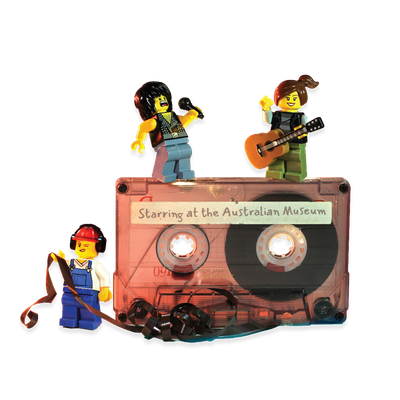Your search returned 2817 results
By Page Type
By Tag
- fish (966)
- blog (696)
- fishes of sydney harbour (401)
- First Nations (298)
- Blog (236)
- AMRI (169)
- archives (164)
- Eureka Prizes (146)
- Aboriginal and Torres Strait Islander (135)
- insect (126)
- Ichthyology (124)
- geoscience (109)
- minerals (102)
- climate change (99)
- podcast (94)
- Fish (91)
- Anthropology (89)
- International collections (80)
- Minerals Gallery (78)
- wildlife of sydney (78)
- Labridae (77)
- frog (74)
- gemstone (70)
- photography (66)
- history (64)
- Mollusca (60)
- gem (59)
- staff (59)
- Birds (56)
- Gems (56)
- Indonesia (56)
- education (56)
- shark (55)
- AMplify (54)
- people (53)
- earth sciences (50)
- exhibition (50)
- past exhibitions (50)
- Gobiidae (48)
- sustainability (46)
- Pomacentridae (45)
- Serranidae (44)
- lifelong learning (42)
- science (42)
- Earth and Environmental Science (41)
- Syngnathidae (41)
- Ancient Egypt (40)
- Bali (40)
- bird (40)
- dangerous australians (40)
-
Australian theropods
https://australian.museum/learn/dinosaurs/australian-dinosaurs/australian-theropod-dinosaurs/The Australian theropod fossil record is extremely limited. Triassic and Jurassic theropod body fossils are completely unknown on this continent. Most Australian theropod fossils come from the Early to Late Cretaceous, largely because sedimentary rocks of this age far more productive for fossils in
-
What is a dinosaur?
https://australian.museum/learn/dinosaurs/fact-sheets/what-is-a-dinosaur/The word ‘dinosaur’ means ‘terrible lizard’ in Greek.
-
Dotted Sweetlips, Plectorhinchus picus (Cuvier, 1830)
https://australian.museum/learn/animals/fishes/dotted-sweetlips-plectorhinchus-picus/Dotted Sweetlips, Plectorhinchus picus (Cuvier, 1830)
-
Largetooth Flounder, Pseudorhombus arsius (Hamilton-Buchanan, 1822)
https://australian.museum/learn/animals/fishes/largetooth-flounder-pseudorhombus-arsius/Largetooth Flounder, Pseudorhombus arsius (Hamilton-Buchanan, 1822)
-
Longsnout Boarfish, Pentaceropsis recurvirostris (Richardson, 1845)
https://australian.museum/learn/animals/fishes/longsnout-boarfish-pentaceropsis-recurvirostris/Longsnout Boarfish, Pentaceropsis recurvirostris (Richardson, 1845)
-
Samsonfish, Seriola hippos Günther, 1876
https://australian.museum/learn/animals/fishes/samsonfish-seriola-hippos/Samsonfish, Seriola hippos Günther, 1876
-
Leaf Scorpionfish, Taenianotus triacanthus Lacépède, 1802
https://australian.museum/learn/animals/fishes/leaf-scorpionfish-taenianotus-triacanthus/Leaf Scorpionfish, Taenianotus triacanthus Lacépède, 1802
-
Largehead Hairtail, Trichiurus lepturus Linnaeus, 1758
https://australian.museum/learn/animals/fishes/largehead-hairtail-trichiurus-lepturus/Largehead Hairtail, Trichiurus lepturus Linnaeus, 1758
-
King Gar, Scomberesox saurus (Walbaum, 1792)
https://australian.museum/learn/animals/fishes/king-gar-scomberesox-saurus/King Gar, Scomberesox saurus (Walbaum, 1792)
-
Tailspot Lizardfish, Synodus jaculum Russell & Cressey, 1979
https://australian.museum/learn/animals/fishes/tailspot-lizardfish-synodus-jaculum/Tailspot Lizardfish, Synodus jaculum Russell & Cressey, 1979
-
Discover more
2025 Australian Geographic Nature Photographer of the Year
Special exhibition
Free entry
Now open -
Discover more
Unfinished Business
Special exhibition
Free entry
Now open -
Discover more
Wansolmoana
Permanent exhibition
Free entry
Open daily -
Find out more
Burra
Permanent kids learning space
Free entry
10am - 4.30pm![]()
-
Discover more
Minerals
Permanent exhibition
Free entry
Open daily![]()




